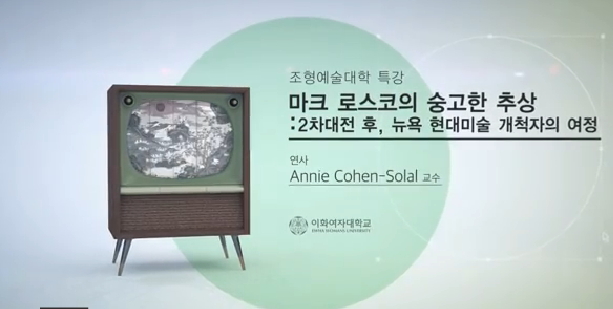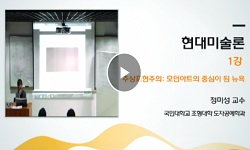Yoo Youngkuk started his career as an artist when he entered Bunkagakuin of Tokyo in 1935 he actively participated in the Japanese art scene as a young Korean artist until 1943. In his earliest works, Rhapsody and Work B, Surrealist and abstract influ...
http://chineseinput.net/에서 pinyin(병음)방식으로 중국어를 변환할 수 있습니다.
변환된 중국어를 복사하여 사용하시면 됩니다.
- 中文 을 입력하시려면 zhongwen을 입력하시고 space를누르시면됩니다.
- 北京 을 입력하시려면 beijing을 입력하시고 space를 누르시면 됩니다.
https://www.riss.kr/link?id=A103593615
- 저자
- 발행기관
- 학술지명
- 권호사항
-
발행연도
2005
-
작성언어
Korean
- 주제어
-
등재정보
KCI등재
-
자료형태
학술저널
-
수록면
173-192(20쪽)
- 제공처
- 소장기관
-
0
상세조회 -
0
다운로드
부가정보
다국어 초록 (Multilingual Abstract)
Yoo Youngkuk started his career as an artist when he entered Bunkagakuin of Tokyo in 1935 he actively participated in the Japanese art scene as a young Korean artist until 1943. In his earliest works, Rhapsody and Work B, Surrealist and abstract influences are manifested as these were prevalent in Japan at the time. With the exception of Rhapsody and Work B, all works available that were executed between 1937 and 1940 are abstract, which points to the fact that Yoo intended abstraction from the beginning. Surviving works in relief suggest his early style was founded on the abstractions similar to Russian Avant-Garde, Neo-plasticism and Bauhaus simplicity. His early abstractions were not the ideational images derived in the process of the abstraction of the representational image, but they arose from the constructive attitude in composing the already stylized non-representational geometries. It is worth noting that his early emphasis was on the pure and absolute geometric abstraction, rather than the images motivated from the figurative representation. Yoo differentiates himself from Kim Whan Ki in the following aspects: one, he eliminated the subject matter i.e. human figures and the nature; two, he maintained the constructivist attitude in creating a strict and absolute abstraction; three, he experimented with different styles without combining them. He manifests direct influences from the prevalent Western art influences, such as Futurism and Russian Avant-Garde, unlike Kim who vaguely references. In both paintings and reliefs, Yoo's attempt in the realization of the pictorial depth and space seems cerebral and conceptualized compared with the other artists of the time who resolved abstraction via the constructive dimension. Uemura, a contemporary critic to the geometric abstractions in Japan, disapproves the stylistic bent in the adaptation of the abstract painting without the comprehension of its spiritual movement. As witnessed in other criticisms as well, contemporary Japanese critics' interest lie mainly in the superficial observation such as the presence of representational elements, composition and use of color. Such formal and superficial understanding of the geometric abstraction resulted in
동일학술지(권/호) 다른 논문
-
- 한국미술이론학회
- 박영택
- 2005
- KCI등재
-
- 한국미술이론학회
- 이지호
- 2005
- KCI등재
-
'연구 업무 전담제'를 통해 살펴보는 국립현대미술관 전시 기획의 새로운 패러다임
- 한국미술이론학회
- 최은주
- 2005
- KCI등재
-
- 한국미술이론학회
- 최태만
- 2005
- KCI등재





 RISS
RISS 코리아스칼라
코리아스칼라







